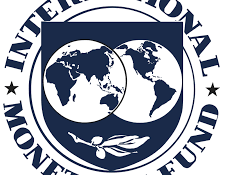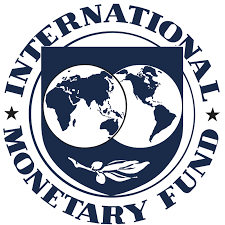
At a time when the economic growth in South Asia Region is accelerating at 7 percent rate, Nepal’s economic growth is reaching 6.3 percent for the coming years. Despite high growth in agriculture sector and good monetary policy, Nepal’s economy is in a healthy condition.
“Economic activity is expanding strongly as the recovery from the 2015 earthquakes and trade disruption continues. Growth reached 6.3 percent in FY2017/18 (mid-July 2017 to mid-July 2018),” said IMF’s Report.
According to IMF, above trend growth has been supported by two successive favorable monsoon seasons, accommodative fiscal and monetary policy, a pickup in reconstruction activity, and markedly improved electricity supply. Inflation averaged 4.2 percent (y/y) in FY2017/18—a multiyear low—aided by declining food prices.
The WEO projections have economic growth moderating to 5 percent and inflation to pick up to 5 percent in FY2018/19 as activity begins to run up against capacity constraints. However, staff may revise the growth projections for Nepal upward in the context of the mission for the Article IV consultation which is planned for December.
“Loose monetary conditions, along with a fourfold increase in banks’ paid-up capital in the two years to mid-2018 required by the Nepal Rastra Bank (NRB), have fueled a strong credit expansion. Private sector credit growth has averaged 22 percent (y/y) in the past two years, even as the NRB maintains ceilings on banks’ loan-to-deposit ratio and the loan-to-value ratio on car loans. Rapid credit growth underscores the need to accelerate banking sector reforms. Building on the recent amendments to the regulatory framework, loan classification, provisioning, and banks’ risk management practices should be upgraded,” writes IMF.

Expansionary policies have fueled imports, leading to a marked deterioration in the current account of the balance of payments, to a deficit of 8.2 percent of GDP in FY2017/18. Imports expanded by 27 percent in FY2017/18, following a 30 percent surge in FY2016/17.
The rise in imports more than offset the positive effect on the current account of the resilience South Asia Regional Update, October 2018 8 of remittances—a key funding source for Nepal’s financial sector and for imports of consumption goods—which increased by 10 percent in FY2017/18, notwithstanding a decline in the number of migrant workers going abroad.
The large current account deficit in FY2017/18 was offset by positive errors and omissions and higher capital inflows. As a result, gross central bank reserves remain adequate, at US$ 8.9 billion in August 2018 (about 7 months of prospective imports of goods and services). The fiscal deficit widened in excess of 6 percent of GDP in 2017/18. Large transfers to local governments and a further increase in capital spending pushed up government outlays. This more than offset the increase in government revenue.
As a result, public debt rose for the first time in many years, to a still-manageable 29.7 percent of GDP. The fiscal deficit could widen further in FY2018/19 with the ongoing implementation of fiscal decentralization, unless the government continues the strong revenue collection effort seen in the first two months of the new fiscal year when revenues rose by 36 percent (y/y).
Nepal’s near-term challenges are to maintain the recent growth momentum and create conditions for sustained high and inclusive growth. Efforts should focus on strengthening key institutions and administrative capacity to boost private investment and growth. Fiscal policy should focus on higher and better-quality public investment and prudent implementation of fiscal decentralization through sustainable intergovernmental fiscal arrangements and the need to build public financial management capacity at the sub-national level.
Hasty implementation of fiscal decentralization could strain government finances and weaken fiscal policy’s stabilization function. At the same time, with the fiscal stance having become more expansionary than in previous years, monetary policy needs to be tightened to keep inflation and balance of payments pressures in check. Structural reform will be key to unlock medium-term growth. Priorities include improving the business climate by fostering competition, reducing the regulatory burden for investment, including in hydropower, and upgrading transportation infrastructure.IMF Charts November 1 2018.pdf
- TANAHU HYDROPOWER PROEJCT: A Significant Achievement
- Apr 15, 2024
- AMBASSADOR HANAN GODAR: Sharing Pain With A Nepali Family
- Mar 30, 2024
- VISIT OF KfW AND EIB TO NEPAL : Mission Matters
- Mar 25, 2024
- NEPAL BRITAIN SOCIETY: Pratima Pande's Leadership
- Mar 24, 2024
- NEPAL ARMY DAY: Time To Recall Glory
- Mar 15, 2024
















